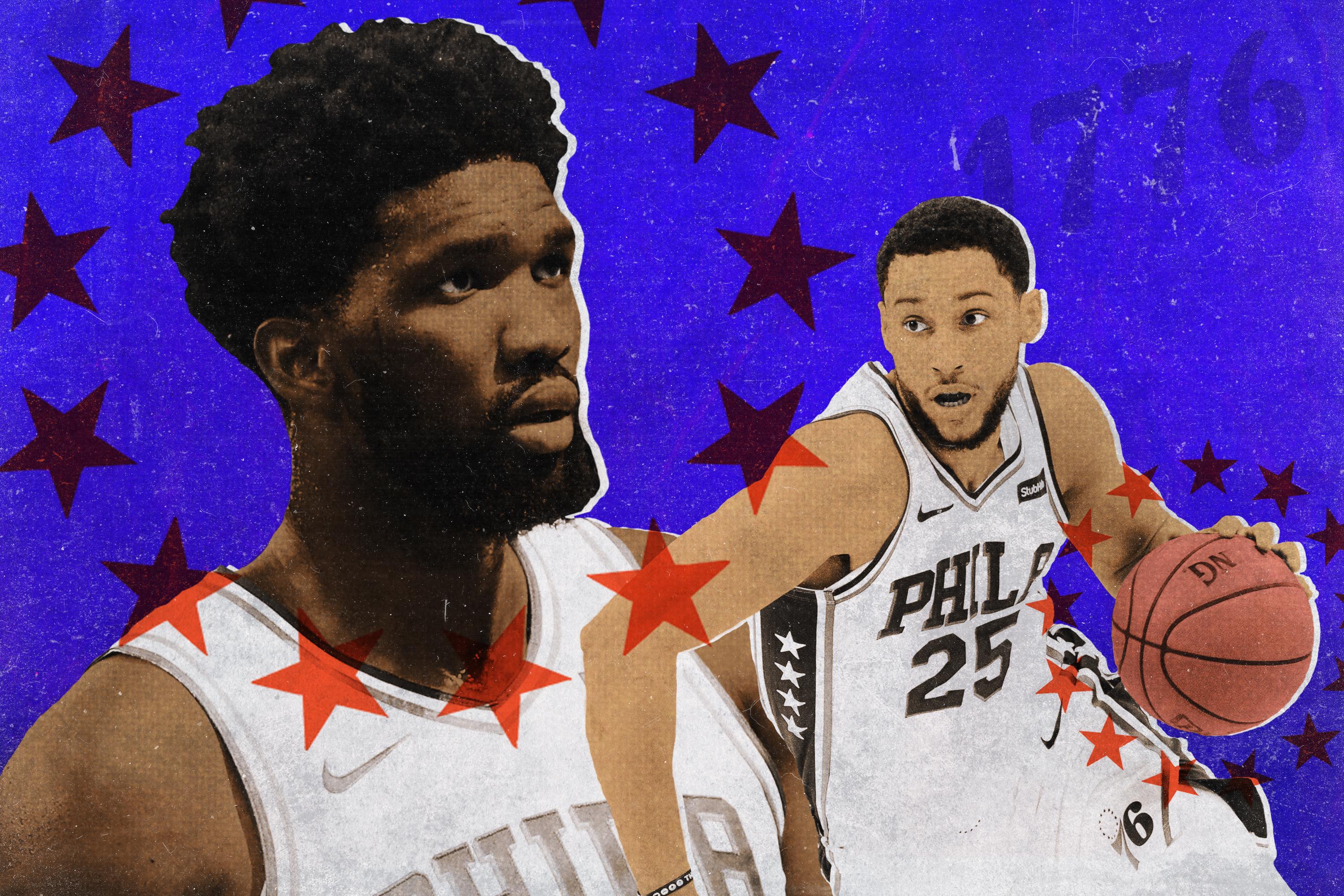
There is no plot twist in the NBA quite like the next few minutes of a Sixers game. Whatever lead has been built will likely give out.
Philadelphia’s offense comes in spells, making the Sixers an intermittent threat to both themselves and their opponents. For possessions at a time, the ball will float around the court—from Ben Simmons on a halted break, to Joel Embiid trailing behind the play, to Josh Richardson through a handoff, to Tobias Harris on the opposite wing, reset to Al Horford at the top of the floor, and then rushed back to Embiid in the mid-post—without accomplishing much of anything.
Then, without warning, the Sixers will break the game. A collection of some of the biggest, keenest defenders in basketball will swallow an opponent’s scoring attempts whole and spit back absolutely furious runs. For a moment, playing against the Sixers can feel completely unmanageable.
Then the run passes, and Philadelphia somehow ends up back in its own way.
This is how one of the most talented teams in the league can lose to the Wizards before rattling off consecutive wins over the Raptors, Nuggets, and Celtics. It’s how an offense that had made quick work of zone coverage this season could then make Miami’s 2-3 appear impenetrable. The only thing that the Sixers have made clear to this point is that they’re good enough to be better than they’ve been. Everything else waffles in and out of truth depending on which version of the team elected to show up at any given moment.
It speaks to the team’s station that a 20-9 record could feel like underperformance. Separate from the weight of the public discourse, the Sixers are a financially leveraged team with title aspirations. Most of what they do should be judged on the merits of how it might be reflected back in May; Simmons’s conscientious objection to taking jump shots only really matters this season in how it constrains Philly’s playoff offense. Concern around the Sixers isn’t about any one game, but the larger trend and the threat of what it represents. This isn’t yet a team with great habits. That won’t stop Embiid from intimidating any opponent who dares to drive in his direction, but it bears out in some of the quieter moments that unsettle the Sixers as a whole. What could be the best defense in the league has been, at times, oddly noncommittal. In recounting a run the Heat made against the Sixers on Wednesday, Harris described the team’s defense in the tradition of George Romero.
“It was like we were zombies out there walking around,” Harris said. “Too many easy baskets and whatnot.”
Ordinarily great defenders stood by as the Heat made cuts and chased rebounds without the slightest resistance. Some of that was to be expected in the aforementioned loss to the Wizards, whom the Sixers played with little regard. To repeatedly allow those lapses against the Heat is just flaking on the responsibility of the possession. The regular season is the time to make mistakes, but only if a team actually learns from them. Otherwise, it’s just rehearsal.
To their credit, the Sixers are trying a nice variety of coverages, which is healthy for a team with this caliber of personnel. The synergy between Embiid’s rim protection and the pursuit of Richardson and rookie standout Matisse Thybulle allows Philly to play a more conservative style of pick-and-roll defense as a default, though they’re hardly limited to it. Simmons can be staffed to all sorts of assignments and is a terror in help, no matter the fashion. Horford allows Embiid to be his most devastating self, and could be the key to the most important individual matchup of the Sixers’ season: on-ball coverage of Giannis Antetokounmpo. (Related: Philly will play the first of its four games against Milwaukee on Christmas.) Harris is big, physical, and especially committed this season. It would be a shame for a team with this level of defensive ability to be any one thing; the Sixers can read, move, challenge, and recover well enough to live in adaptation, so long as they maintain their focus. Miscommunication comes with the territory. Fits of negligence really shouldn’t.
This is especially concerning when so many of Philadelphia’s games are decided by its ability to get stops. The Sixers’ scoring efforts, beyond the ease of a fast break, trend toward the overly deliberate. Commanding as Embiid may be on the block, there isn’t enough room around him for improvised flow. Every other Sixer on the floor—Simmons first and foremost—needs to be meticulously arranged just to keep the post viable. It’s the kind of arrangement that easily leads to frustration, which can bleed into the defense, which then becomes an even larger problem. The Sixers know what they want to do on offense; they just don’t always know how to manage it. With that comes tension. It can be dangerous for a team to peak too early, but there’s also a cost that comes with soul searching for an entire season.
This is what’s at stake for the Sixers in December and January, as they play otherwise routine games to round out their schedule. It’s not about being great all the time, but enough of it—surrounding an impressive roster with the structure to control games consistently. If that’s not possible, then Philadelphia will have to reconsider its roster as the trade deadline nears—just as it did last season with a February deal to acquire Harris. As it stands, the Sixers will build a mounting pressure against their opponents only to let it slip. You can still win that way, though everything becomes more difficult than it has to be. The Sixers have to become reliable beyond the ways in which Embiid, Simmons, Horford, and their teammates are individually reliable. They need an understanding of who they are beyond distinctive size. Identity, after all, is a team’s peace of mind.

